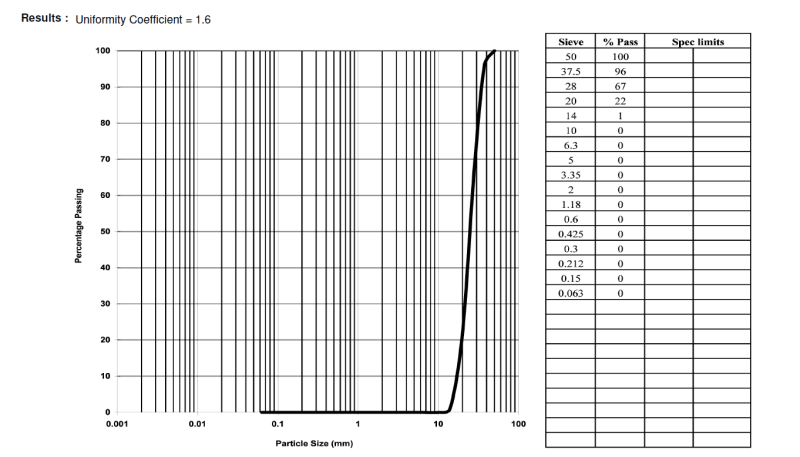ac4u2nv
Geotechnical
- May 30, 2013
- 52
Dear all
Im not clear on how this table works. i understand its based off PSD analysis however -
e.g. class 1 B states that 100% has to pass the 125mm seieve and less than 15% ca be within the 0.063mm sieve so where is the other 85%?
does it simply mean all the other boxes can contain mass from the sample tested - however for the sample to be compliant in addition it hsa to ALSO contain the mass mentioned with the specified range boxes.
Im looking at a psd sample now - and its fits none of the grades at all.

like wise 6m and 6n and p = nothing will conform to that - 100% pass the 75 mm and only 10% in the 63 microns seive - where is there rest of the materail going to.
also where is 6Q?!!! its mentioned in the doc but not in the table.
Please help
Im not clear on how this table works. i understand its based off PSD analysis however -
e.g. class 1 B states that 100% has to pass the 125mm seieve and less than 15% ca be within the 0.063mm sieve so where is the other 85%?
does it simply mean all the other boxes can contain mass from the sample tested - however for the sample to be compliant in addition it hsa to ALSO contain the mass mentioned with the specified range boxes.
Im looking at a psd sample now - and its fits none of the grades at all.

like wise 6m and 6n and p = nothing will conform to that - 100% pass the 75 mm and only 10% in the 63 microns seive - where is there rest of the materail going to.
also where is 6Q?!!! its mentioned in the doc but not in the table.
Please help
